- According to a study by the National Association of Home Builders, employing workers with advanced skills and training can increase productivity by up to 30%.
- According to research by McKinsey & Company, companies with a strong commitment to quality and excellence are up to four times more likely to be top financial performers.
- According to the Society for Human Resource Management, the cost of replacing an employee can be as high as 50%-60% of their annual salary.
- According to the Occupational Safety and Health Administration (OSHA), companies with strong safety cultures experience 50% fewer accidents.
- According to a study by PricewaterhouseCoopers, 93% of executives believe that innovation is essential for driving long-term success.
In the demanding sectors of construction, manufacturing, and engineering, success isn’t just measured by the number of hands-on deck but also the expertise and dedication each individual brings to the table. While a large workforce might seem enticing, pivoting towards investing in high-quality employees yields benefits that resonate throughout the entire operation. This comprehensive article delves into the profound advantages of prioritizing quality over quantity in these industries, shedding light on how a focus on excellence in staffing can catalyze productivity, efficiency, and long-term prosperity.
At the heart of every successful project lies a team of skilled professionals whose expertise and proficiency are indispensable. High-quality employees in the According to a study by the National Association of Home Builders, employing workers with advanced skills and training can increase productivity by up to 30%. High-quality employees in the construction, manufacturing, and engineering sectors possess a depth of knowledge and experience that sets them apart. From seasoned civil engineers adept at navigating complex structural challenges to meticulous welders with an eye for precision, each member of the workforce contributes a unique skillset that elevates the standard of workmanship. This wealth of expertise not only accelerates project timelines but also minimizes errors and rework, optimizing resource utilization and enhancing overall project efficiency.
In industries where precision and efficiency are paramount, the mantra of “quality over quantity” resonates profoundly. Staffing high-quality employees fosters a culture of excellence and accountability that seeps into every aspect of operations. According to research by McKinsey & Company, companies with a strong commitment to quality and excellence are up to four times more likely to be top financial performers. Unlike a sprawling workforce that may require extensive supervision and training, a smaller team of proficient individuals operates with greater autonomy and agility. This streamlined approach not only accelerates project delivery but also fosters innovation and problem-solving, driving continuous improvement across all facets of the organization. The result is heightened productivity, efficient resource allocation, and a competitive edge in the market.
When the end product is tangible, the quality of output directly impacts customer satisfaction and brand reputation. High-quality employees are committed to delivering excellence in every endeavor, from conceptual design to final product delivery. Research by Deloitte reveals that companies focusing on quality are more likely to have higher customer satisfaction rates and stronger brand loyalty. Whether constructing a structurally sound building, manufacturing precision-engineered components, or optimizing industrial processes, the attention to detail and craftsmanship exhibited by proficient employees result in superior quality outputs that surpass client expectations. Consequently, such excellence not only enhances customer retention but also solidifies the organization’s position as a leader in its field, driving sustained growth and profitability.
A notable advantage of investing in high-quality employees is the significant reduction in turnover rates and associated training costs. According to the Society for Human Resource Management, the cost of replacing an employee can be as high as 50%-60% of their annual salary. Quantity-centric approaches to staffing have a revolving door of hires, while skilled professionals are more likely to exhibit loyalty and commitment to the organization. Their expertise reduces the need for extensive training programs, saving both time and resources. Moreover, the stability and continuity provided by a dedicated workforce foster a positive work environment, leading to higher morale, increased employee retention, and ultimately, greater long-term success for the company.
Safety is paramount in industries where occupational hazards are prevalent, making employee competency and adherence to safety protocols imperative. High-quality employees not only possess the required technical skills but also prioritize safety as a fundamental aspect of their work ethic. According to the Occupational Safety and Health Administration (OSHA), companies with strong safety cultures experience 50% fewer accidents. Whether adhering to OSHA regulations on a construction site or implementing stringent quality control measures in a manufacturing facility, proficient employees mitigate risks and ensure a safe working environment for themselves and their colleagues. This proactive approach not only reduces the incidence of workplace accidents but also minimizes costly liabilities, safeguarding both personnel and company assets.
High-quality employees, with their diverse skill sets and forward-thinking mindset, serve as catalysts for innovation within their respective fields. According to a study by PricewaterhouseCoopers, 93% of executives believe that innovation is essential for driving long-term success. Whether devising sustainable construction methods, optimizing manufacturing processes through automation, or pioneering breakthroughs in engineering design, proficient employees drive change that propels the company ahead of the curve. Their adaptability to changing market dynamics and willingness to embrace emerging technologies ensure that the organization remains agile and resilient in the face of uncertainty, positioning it for sustained growth and competitive advantage.
In the fiercely competitive landscapes of construction, manufacturing, and engineering, success isn’t measured by the size of the workforce but by the caliber of individuals comprising it. By prioritizing quality over quantity in staffing, companies unlock benefits that extend far beyond immediate project deliverables. From enhanced skill sets and heightened productivity to superior quality outputs and reduced turnover costs, investing in high-quality employees fosters a culture of excellence, innovation, and long-term prosperity. In doing so, organizations position themselves as industry leaders, driving growth, and innovation while solidifying their reputation for excellence in the marketplace.







